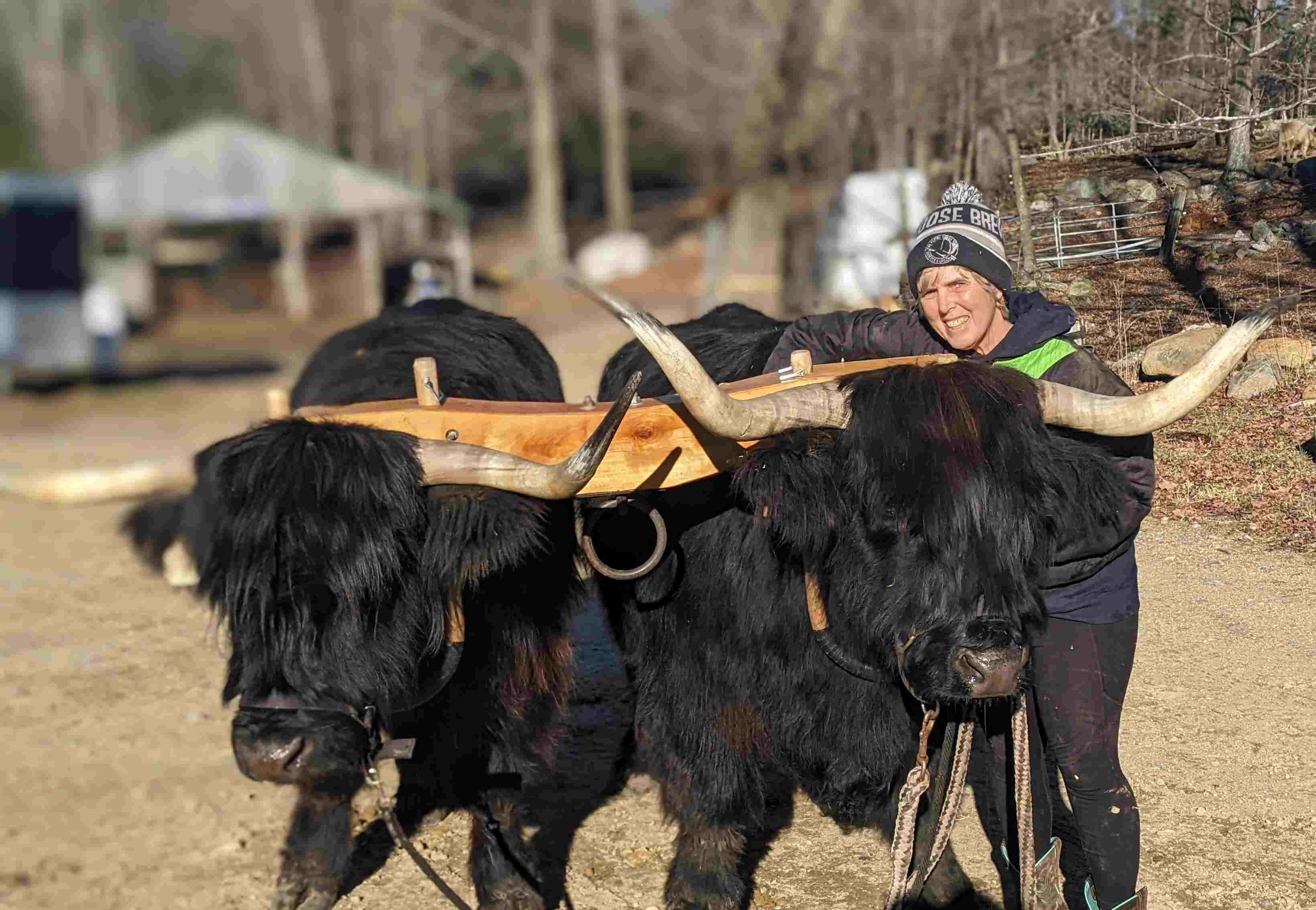Oreo Cookie Cows Join the Herd
posted on
October 19, 2023
Belted Galloway cattle, like Scottish Highland bovines, are native to Scotland. Athena, a red Beltie, is a friendly heifer (female) calf ready to welcome visitors to Miles Smith Farm.

There is a new breed of cow here on Miles Smith Farm. This year, I imported twelve Belted Galloways from faraway Pittsfield, N.H. They are called “Belties” for short. With a white band around their bellies, they are also called “Oreo Cookie cows.” The breed was developed during the 16th century in Scotland and were brought to the United States in the early 1900s. Hardy enough to survive in the cold Scotland seacoast region, they are ideally suited for New Hampshire weather.
The Belties have a lot in common with my Scottish Highland cattle. Both breeds…
- …grow a lush winter coat featuring a soft, insulating undercoat topped by coarse, wavy outer hair that’s perfect for blocking wind and shedding rain.
…make great "lawn ornaments" for backyard farmers.
…eat brush and keep pastures free of weeds and young, ambitious trees.
…are great moms.
…are docile and, therefore, ideal for a small family farm.
Their coloring is different. Highlanders are a single color; most Belties are black and white, but a rare few are red and white.
There is another big difference between the breeds: horns. All Highland male and female cattle have horns, while Belties don't. They are what cattle people call “naturally polled," which means dehorned through selective breeding.
Although I don’t consider horned cattle dangerous, some backyard farmers who buy cattle from me are nervous about handling horned Highland cattle. Cattle buyers can now purchase cute horned Highland bovines or adorable non-horned Belties.
My big concern is the muddling of the breeds, so I’ll be taking pains to keep Ferdie, our Highland bull, away from the Cookies.
Pumpkins
There is something all cattle love, horned or not: pumpkins. If you're wondering what to do with used Halloween pumpkins, bring them to the farm for smashing. Cattle don't have top front teeth, which prevents them from biting into hard pumpkin skin. Smashing pumpkins and squash is a service cattle appreciate so they can munch the smaller morsels.
Pumpkins also work as a natural dewormer. Like dogs and cats, cattle need regular deworming, and pumpkins are the perfect natural medicine. Whoever said, "Food is medicine," got it right when feeding pumpkins to cattle,
You're invited to bring your pumpkins to the farm on November 4 to watch Topper, a 2,000-pound black Highland steer with massive horns, run to the fence when you smash your pumpkins. Despite his horns and size, Topper is obedient, calm, and loves his pumpkin medicine.
My Beltie calves have never eaten pumpkins, so they are in for a delightful trick-or-treat surprise.
* * *
Carole Soule is co-owner of Miles Smith Farm, where she raises and sells pork, raw milk, eggs, and beef. She can be reached at carole@soulecoaching.com. Visitors are welcome to smash pumpkins on Saturday, November 4, between 11 a.m. and 4 p.m. Bring your own pumpkins or smash ours. Find us at 55 Whitehouse Rd., Loudon, NH.



